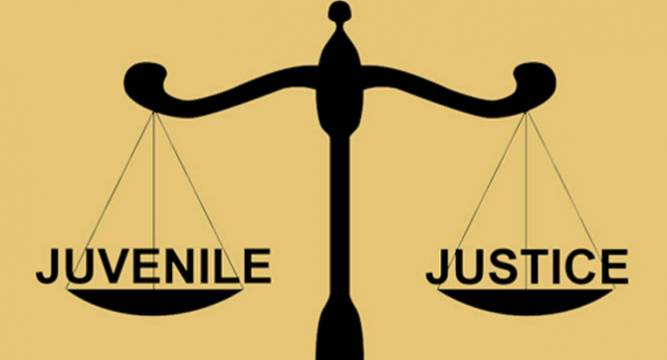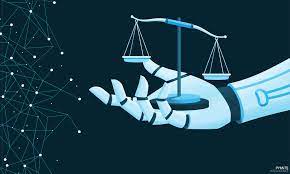The article “JUVENILE JUSTICE ACT IN A CAPSULE” is written by Roopali V. Nayak, a first-year student at Vaikunta Baliga College of Law, Udupi.
INTRODUCTION:
In India, a Juvenile is any person below the age of 18 years as per the Juvenile Justice (Care and Protection of Children) Act 2015. This Act can be classified into 4 categories, they are:
- Child in conflict with law-Which speaks about offence done by a child. When a juvenile commits an offence the juvenile is not regarded as a criminal but is addressed as a child in conflict with law.
- Child in need of care and protection.
- Child legally free for adoption.
- Offence against child.
JUVENILE JUSTICE ACT, 2015- AN OVERVIEW:
| CHAPTERS | CONTENTS | SECTIONS |
| 1 | Preliminary | 1-2 |
| 2 | Principles | 3 |
| 3 | Juvenile Justice Board | 4-9 |
| 4 | Procedure for Child in conflict with law | 10-26 |
| 5 | Child Welfare Committee | 27-30 |
| 6 | Child in need of care and protection | 31-38 |
| 7 | Rehabilitation | 39-55 |
| 8 | Adoption | 56-73 |
| 9 | Offence against children | 74-85 |
| 10 | Miscellaneous | 90-112 |
MEANING:
- Nil Novi Spectrum:
“Nil Novi Spectrum” is a Latin maxim which means “Nothing new on this planet” which is relevant to the Juvenile Laws of India. There is a saying that goes, “It’s never too late to fix something”, and the same gist is applied by the Juvenile Laws of India. In India children in conflict with laws are shows leniency and are not tried as adults, it is believed that such juveniles are “Old enough to try the crime, sufficiently old to try to the time” which is an English concept utilised by some states in the United States.
The doctrine of ‘Doli Incapax’ means the incapacity of committing a crime. It finds its basis in Article 40(3)(a) of the United Nations Convention on the Rights of Child, which states that every country must mention the minimum age for children who should be exempted from any kind of criminal liability because of their inability to decipher the nature and consequences of the act. As per Indian Laws, the given age is 7 years. Juveniles of the age of 7 and below would not be prosecuted for the commission of any crime.
Juvenile delinquency means a crime committed by a person who is under the age of 18 years.
OBJECTIVES AND NEEDS OF THE JUVENILE JUSTICE SYSTEM:
With rising juvenile delinquencies the need to have a juvenile justice system arose.
- The Juvenile Justice System aims to provide a framework for the development of children in need of care and protection.
- To protect the rights of children in conflict of law, and to have their rehabilitation and social integration preventing them from being repeat offenders.
- To establish institutions and mechanisms for rehabilitation.
- JUVENILE JUSTICE IN OTHER COUNTRIES:
- U.S.A.-Anybody below the age of 18 is considered as a juvenile in U.S.A.
It is left at the discretion of the police whether to reprimand the juvenile or to take them under custody. In certain exceptional cases juvenile is tried as an adult, when the age of the juvenile is near to 18. The age of juvenile is 18 years even under the juvenile justice laws of China, Belgium, etc.
- UK-Juvenile courts were established in 1908 for the fair trial of juvenile delinquents. They were tried under the Children and Young Offenders Act, 1933. And their reformative training was provided under the Criminal Justice Act, 1948.
HISTORY OF JUVENILE DELINQUENCY IN INDIA:
Before 1969 there was no common law for Juvenile Delinquency in India, every state had different age limit for a juvenile. For example; under Bombay Children Act 1948 a child is a boy below 16 years and girls below 18 years of age.
The Apprentices Act, 1850 was the first to deal with children in conflict with law. This law allowed the courts to treat children who committed petty crimes as apprentices instead of imprisoning them.
The birth of comprehensive law for Juvenile Justice in India dates back to the time the Constitution was being prepared where The Children’s Act of 1960 was enacted, as per which the courts dealt with people below 16 years of age who did not commit crimes punishable with death or life imprisonment.
The Juvenile Justice Act of 1986 followed the United Nations Minimum Rules for the Administration of Juvenile Justice and the Juvenile Justice Act of 2000 aimed to follow the principles under United Nations Conventions.
The Nirbhaya gang rape case of Delhi led to a punitive approach to juvenile justice system, Parliament also passed the Juvenile Justice (Care and Protection of Children) Act in 2015 replacing the previous Act. The Act offered provision to allow trials of juveniles in the age group of 16-18 years as an adult in case of heinous crimes.
The Juvenile Justice (Care and Protection of Children) Act of 2015 was replaced by the Juvenile Justice (Care and Protection of Children) Act of 2021 which included certain changes regarding adoption, categorisation of offences, designated courts, and eligibility criteria for members of Child Welfare Committees (CWCs).
CAUSES OF JUVENILE DELINQUENCY:
- Family problems and bad parenting:
Family is the first place where a child gets to interact with people so it gets very important for every child to have good environment at home. A lack of parental affection and support or in more severe cases parental indifference, hostility or rejection causes children to feel emotionally insecure and leads to poor personality development, thus encouraging antisocial or delinquent behaviour. Constant quarrels and fights among family members also adds to this.
Another negative attitude is that of authoritative parenting, where excessive control and constant criticism deprives children of the freedom to express themselves.
- Poverty:
Poverty reduces the chances of the youngsters completing formal education hence increasing their chances of becoming juvenile offenders. According to Pagani et al. (1999), school plays a major role on preventing youngsters from engaging in delinquent behaviour. Youths from poor families might miss the chance to benefit from the school environment as quality education is getting expensive day by day.
- Economic growth:
According to economic theory, crime should decrease as economic growth and opportunity improve. That’s because the incentive to engage in illegal activities decreases as legal avenues of earning income becomes more fruitful. However there are documented cases where economic growth has led to higher crime rates.
- Problems at school:
Problems at school includes peer rejection, bullying, ragging, study pressure, exam stress, unhealthy competition and comparisons, etc. can affect the mental wellbeing of a juvenile giving rise to delinquency.
- Socioeconomics:
Socioeconomic status (SES) is one of the most well -documented correlates of juvenile delinquency. Many studies have shown that youths from low-SES families are more likely to engage in delinquent behaviour than youths from high-SES families. In most studies, SES is treated as a static characteristic.
- Substance abuse:
80 percent of minors in state juvenile justice systems were under the influence of drugs or alcohol when committing their crimes, test positive for drugs, were arrested for committing an alcohol or drug offense, admitted to having substance abuse or addiction problems or shared some combination of these characteristics. It is estimated that 1.9 to 2.4 million of the minors in the juvenile justice system have substance abuse or addiction issues and only 68,000 receive treatment. Increasingly, juvenile courts are recognizing the role that addiction plays in juvenile crimes and providing treatment options where available and appropriate.
- Biological factors:
Genetic studies have shown increased criminality in natural children of criminal fathers and an extra Y chromosome in many aggressive males. Biochemical studies have found low serum cholesterol in children with attention deficit disorder, a positive correlation in children with attention deficit disorder, a positive correlation between elevated plasma testosterone and aggression, and higher violent criminality by females during the premenstrual week. Physiological studies have focused on the connections between autonomic reactivity, avoidance learning, and need for stimulation in connection with aggression. Delinquency is found more in adolescents with histories of hyperactivity. Learning problems, lower IQ, Neurological disease may also play a part in delinquent behaviour.
- Lack of moral guidance:
Parental or adult influence is very important factor in deterring delinquency. If the juvenile is taught as to what acceptable behaviour is and what is not, then it is more likely that the juvenile would turn delinquent.
- Peer pressure:
Adolescents spend more time with peers which effects the ability to take independent devoid of peer judgement, by which choosing the right friend circle becomes crucial, as wrong peer groups might lead to getting indulged in criminal activities.
- Violence:
Facing or seeing someone being subjected to any form of violence, physical or mental can be too tormenting on a young mind which might lead to emotional imbalance.
- Technology:
Technology is a great boon for the mankind, only if it is used right. With easy access to a wide range of content, be it ferocious and vehement video games, over glorified action films or pornographic content, when left unmonitored can lead to serious consequences.
WAYS FOR REFORMATION, REHABILITATION AND SOCIAL INTEGRATION:
- Observation homes:
Observation home is an institution where neglected and delinquent juveniles are kept for a few weeks or till the decision of the case is pending. Children are brought by the police officers or parents voluntarily admit them.
- Children’s home:
The State Government may establish and maintain either by itself or in association with the voluntary organizations for the child on need of care and protection.
- Special homes:
Rule 29(1)(ii) of the JJMR 2016 states that there should be distinct Special Homes for girls beyond the age of ten, boys between the ages of eleven and fifteen, and boys between the ages of sixteen and eighteen. Children in the Special Home should be divided into groups based on the nature of their mental and physical condition.
- Aftercare organisations:
Aftercare organisations are special homes registered under the governmental nodal agency functions for the welfare of delinquent children. At the aftercare organisations, the Juveniles are given vocational training, therapeutic training to improve psychological behaviour.
Other measures:
- Vocational training
- Therapeutic training to improve psychological behaviour
- Continuing education
- Consensus about social values
- Financial independence
- Activities for physical and mental fitness
- Recreational activities
- Parent-children interaction
- Community services
- Anti-ragging and anti-bullying programmes
PROMINENT CASE LAWS:
SHEELA BARSE VS. UNION OF INDIA:
It was held in this case that on no account should the children be kept in jail and if a State Government has not got sufficient accommodation in the remand homes or observation homes, the children should be released on bail instead of being subjected to incarceration in jail.
PRATAP SINGH VS. STATE OF JHARKHAND:
In this the appellant was 18 when produced before the court for causing death by poisoning.
High Court held that for determining the age of juvenile, the provisions of 1986 Act would apply and not 2000 Act. The High Court, however, took the view that the date of birth, as recorded in the school and the school certificate, should be the best evidence for fixing the age of the appellant.
High Court was also of the view that any other evidence for fixing the age of the appellant.
RATAN SINGH VS. STATE OF PUNJAB:
The Supreme Court held that a juvenile offender cannot be sentenced to death or life imprisonment as such sentences are prohibited under the Juvenile Justice Act.
HARI RAM VS. STATE OF RAJASTHAN:
An order by the Additional Sessions Judge in Didwana on April 3, 2000, determined that Hari Ram was below 16 years old at the time of the offense. Consequently, the judge directed that he should be tried by the Juvenile Justice Board in Ajmer, Rajasthan.
It emphasized that juvenility in a case of conflict with law is determined based on the age of the person at the time of the offense, not at the time of the court’s acknowledgment.
SALIL BALI VS. UNION OF INDIA:
In this case, a person of seventeen and a half years was charged with the offence of rape in a moving vehicle. It was argued that the 2000 Act must reconsider the gravity of offences committed by the juveniles of the age group 16-18 years and amend the Juvenile Justice Act to allow juveniles who have allegedly committed crimes such as rape and murder to be tried and punished under the laws applicable to adults. Also to lower the juvenile age from 18 to 16.
It was not done as the age of 18 years was decided based on scientific and psychological research and it is believed that until that age juveniles can be reformed and restored back into the society.
PUNE CAR ACCIDENT:
On 19th May 2024, morning, a 17 year 8 months old boy who was reportedly inebriated, was driving a Porsche sports car and knocked down two motorcycle-borne software engineers in Kalyani Nagar area of Pune.
The juvenile was granted bail, the conditions for bail included writing a 300-word essay on accidents, painting traffic awareness boards, working with traffic awareness boards and attending counselling.
Section 12 of the Juvenile Justice Act makes no distinction between bailable and non-bailable offences and the Juvenile Justice Board cannot deny bail to any juvenile except under the situations mentioned under section 12 which sometimes can be misused by certain delinquents.
(It has emerged that the teen’s grandfather, who also stood for surety of his bail, allegedly has underworld connections.
Grandfather of the minor has been arrested for allegedly forcing their driver to take the blame)
CONCLUSIVE EVALUATION:
Juvenile Justice Act mainly focuses of reformation of Juvenile delinquents rather than punishing them. It is absolutely necessary to rehabilitate and reintegrate the juvenile into the society and to make the juvenile aware of the gravity of the offence committed, so that it is not being repeated.
The Act provides for the formation of various boards and committees like The Juvenile Justice Board (sec 4), Child Welfare Committee (sec 27), Special Adoption Agency (sec 65), Central Adoption Resource Agency (sec 68), State Adoption Resource Agency (sec 67),etc. which aims at protecting the interests of the juveniles as the act understands that juveniles cannot be treated as adults and require special care and protection.
REFERENCES:
i. https://cara.wcd.gov.in/PDF/JJ%20act%202015.pdf
ii. https://www.ijnrd.org/papers/IJNRD2303140.pdf
iii. https://samistilegal.in/juvenile-justice-care-and-protection-of-children-act-2015/
v. https://legalvidhiya.com/history-of-juvenile-justice/?amp=1
vii. https://i-probono.com/articles/juvenile-justice-amendment-act-2021-a-critical-view/
viii. https://blog.ipleaders.in/rehabilitation-of-juveniles/
xiii. https://childsafety.losangelescriminallawyer.pro/juvenile-crime-and-substance-abuse.html
xvi. https://blog.ipleaders.in/all-about-juvenile-justice-act/#Conclusion






Leave feedback about this